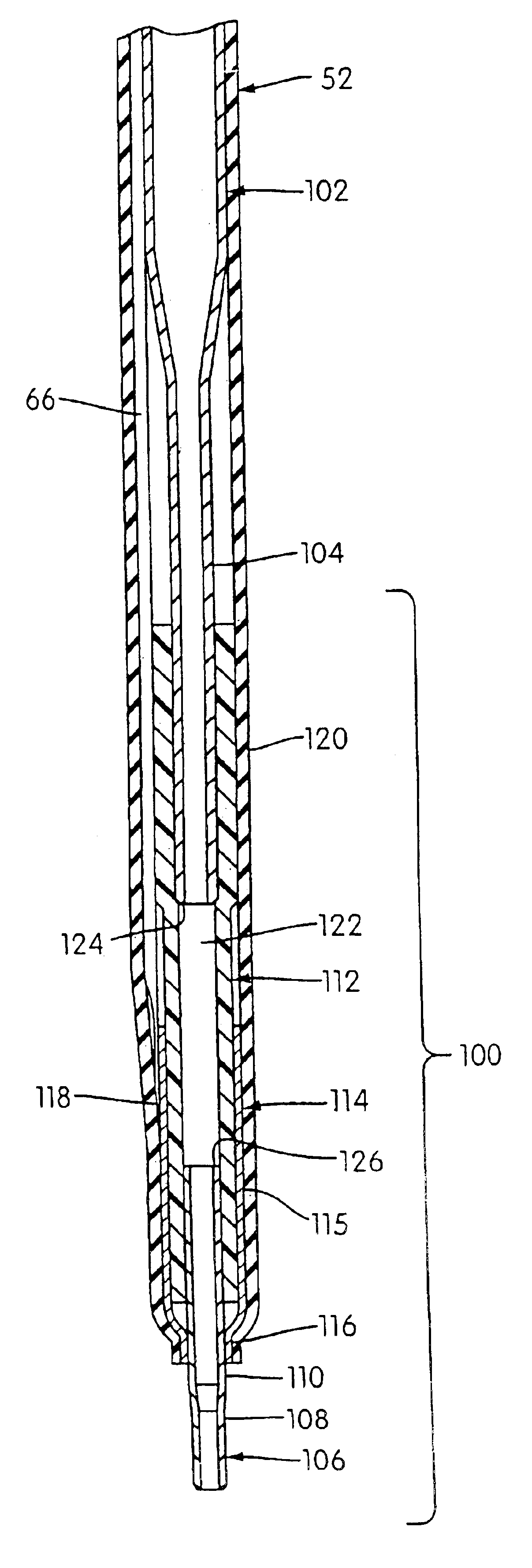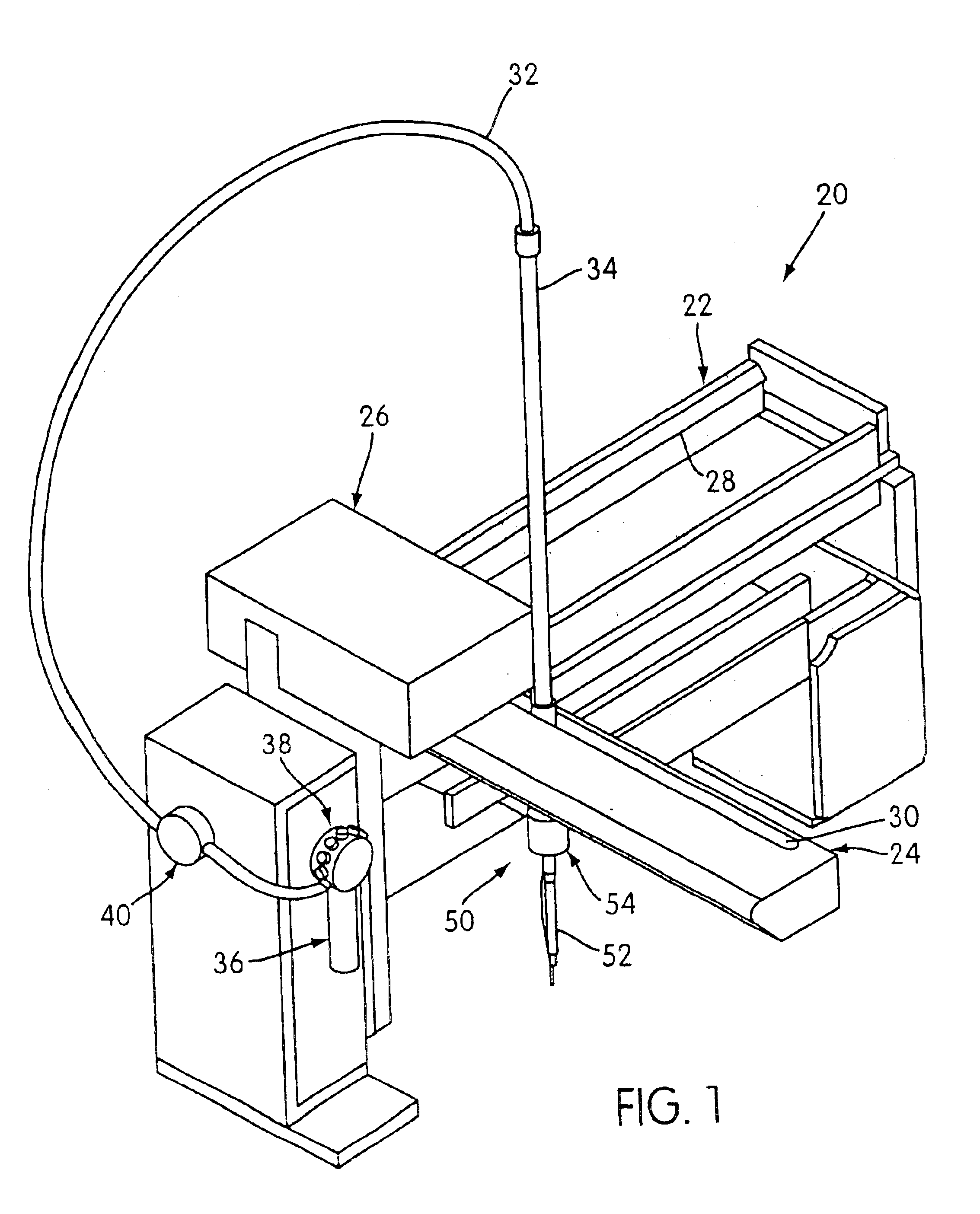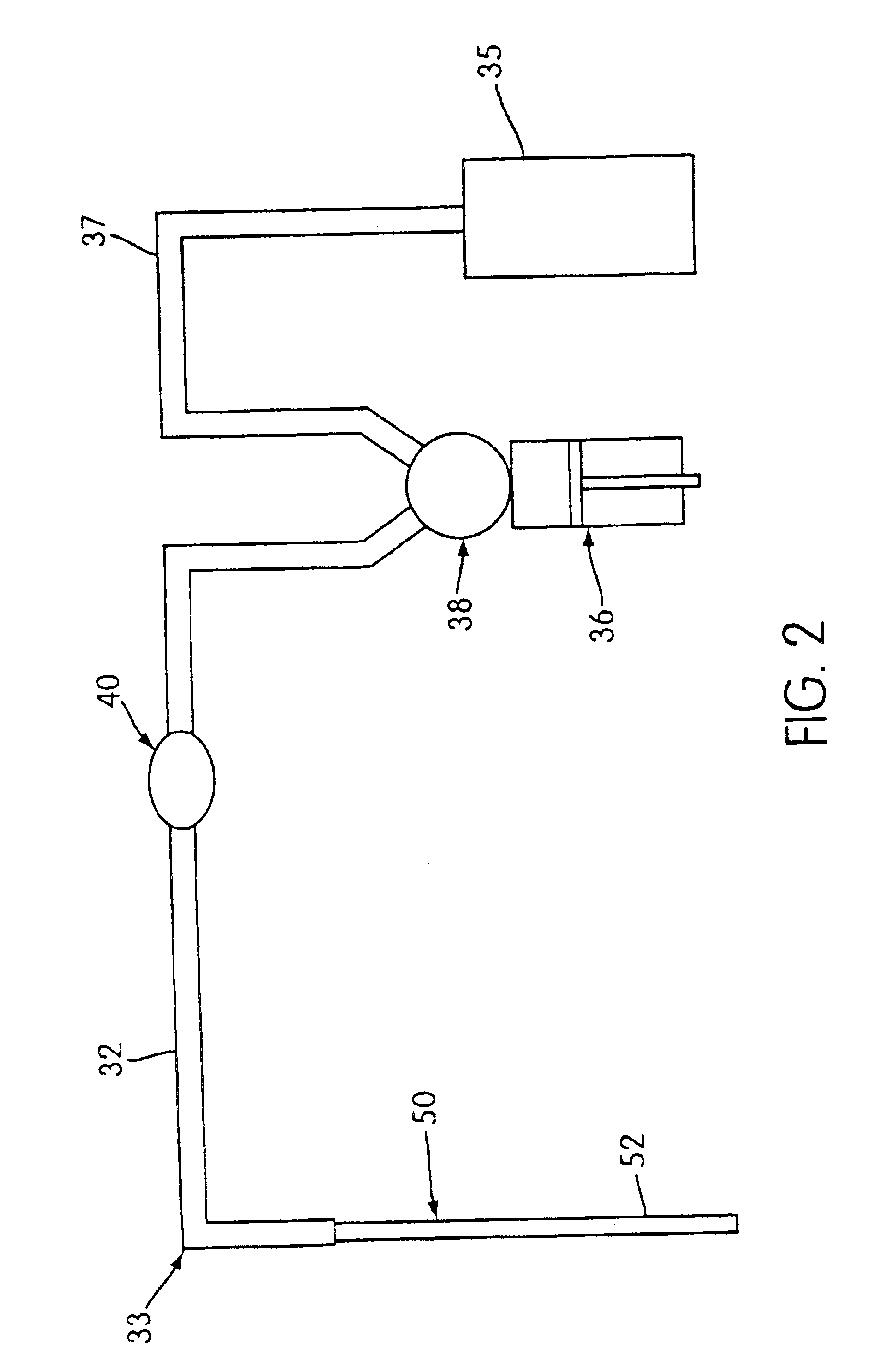Fluid dispense verification system
a verification system and fluid dispense technology, applied in the field of fluid dispense verification system, can solve the problems of reducing the overall size affecting the accuracy of the fluid delivery probe, etc., and achieves the effect of small overall size and simple construction
- Summary
- Abstract
- Description
- Claims
- Application Information
AI Technical Summary
Benefits of technology
Problems solved by technology
Method used
Image
Examples
Embodiment Construction
A robotic substance transfer mechanism with which a fluid dispense and fluid surface verification system according to the present invention can be operationally combined is generally designated by reference number 20 in FIG. 1. The robotic substance transfer mechanism 20 into which the dispense and surface verification system of the present invention can be incorporated may be an off-the-shelf device, such as a Model No. RSP 9000 Robotic Sample Processor available from Cavro Inc. of Sunnyvale, Calif. On the other hand, while the dispense and surface verification system of the present invention is described herein primarily in the context of its incorporation into a robotic substance transfer mechanism, such as that shown in FIG. 1, the system can as well be incorporated into any mechanism which performs an automated fluid delivery function and in which fluid dispense verification and / or fluid surface detection is required or advantageous.
The robotic substance transfer mechanism 20 i...
PUM
 Login to View More
Login to View More Abstract
Description
Claims
Application Information
 Login to View More
Login to View More - R&D
- Intellectual Property
- Life Sciences
- Materials
- Tech Scout
- Unparalleled Data Quality
- Higher Quality Content
- 60% Fewer Hallucinations
Browse by: Latest US Patents, China's latest patents, Technical Efficacy Thesaurus, Application Domain, Technology Topic, Popular Technical Reports.
© 2025 PatSnap. All rights reserved.Legal|Privacy policy|Modern Slavery Act Transparency Statement|Sitemap|About US| Contact US: help@patsnap.com



